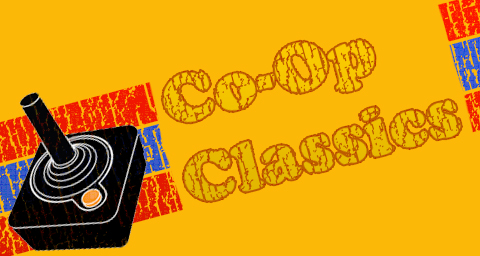This week, we continue discussing the Dungeons and Dragons arcade game series. Tower of Doom was the first title, and it was fantastic. The sequel is even better, which is saying a lot. In my opinion, it is the finest arcade co-op game you will ever play. Today, Co-Op Classics is all about Dungeons and Dragons: Shadow Over Mystara.
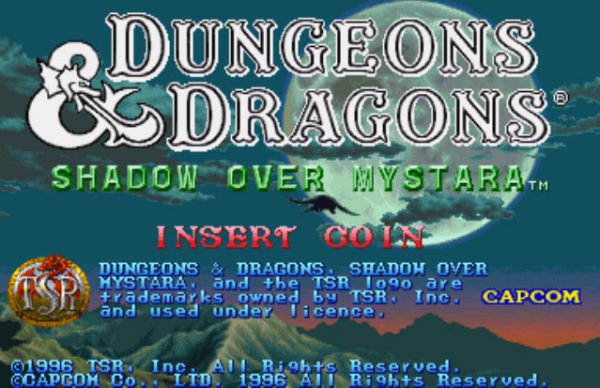
You'll recall from last time that Capcom made some fine arcade brawlers. D&D: Shadow Over Mystara was among the last of the side-scrolling beat em ups they produced, and you can certainly tell that Capcom used every trick in their book, going all out for an awesome experience. All of the great things from the original return. A good variety of character classes, use of special items and weapons, fantastic spells and abilities... all of these returned, but even better. The real treat, choose your own adventure style progression, was back, too, and this time players had even more choices.
First let's talk about the additions to the character classes. Remember playing Gauntlet? Of course you do. Didn't it suck when you had two players who wanted to be the Valkyrie, but couldn't? D&D: Tower of Doom had a similar problem. Only one player could be the fighter, or the dwarf, etc. Just like Gauntlet 2 fixed this issue, so too did the D&D sequel. Each character class in Shadow Over Mystara had two separate varieties, which looked different yet played (mostly) the same. You and your buddy could both be elves, if you wanted. Two more character classes were added, as well. The magic user played much like the elf, but traded the elf's modest hand to hand abilities for additional spells. The classic D&D thief class was added in, too. As you'd expect, she had abilities like picking locks, detecting traps, and dealing out massive damage with a backstab. Additional classes in this game meant less time in my real classes in college, I'll tell you that.
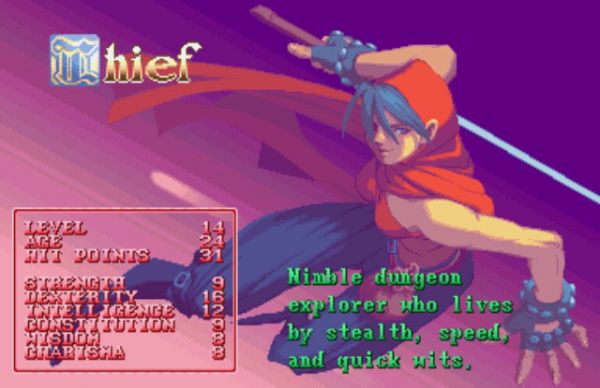
The use of magic items and treasure was improved in Shadow over Mystara, also. In the first game, items were somewhat limited. You might find a ring of fireball, for example, or a magical sword that increased your damage. In the sequel, each character had item slots where armor and such could be equipped. You might find boots that make you more agile, or a piece of jewelry that enhanced your spellpower. Best of all were the items obtained by turning in parts from bosses. The most famous example was the Cloak of Displacement, which you could earn by getting the skin off of the Displacer Beast (a rather nasty cat with tentacles). It was a tabletop D&D fan's dreams made into digital reality.
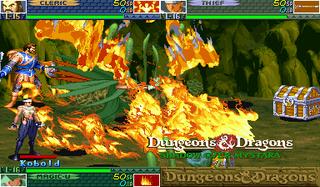
As I said before, the branching choices of gameplay were back, and even more intricate. You could play the game for weeks, and not see every area, or every ending. Check out the diagram below which maps out all the different paths in the game. This game is the big time, folks. It was crazy, and yet incredibly addicting. I can't think of another game where I wanted to replay it again right after I finished it as much as Shadow Over Mystara. The game rewarded this behavior, by giving you so many choices of character class, items, and gameplay paths. Indeed, the game was chock full of reasons to play it again. The two different magic users and clerics had slightly different spellbooks, even. Brilliant game design, yet very expensive for the player!
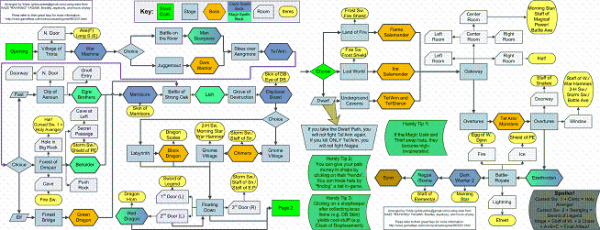
Hidden secrets are an important part of any arcade game, and D&D: Shadow Over Mystara didn't disappoint in this respect. All sorts of tricks, hidden items, and secret areas were implemented. You might find a Cursed Sword, which you might think would be a bad thing. It turns out that you could change a cursed sword into an impressive weapon by swinging it multiple times, or having a cleric attempt to pick it up repeatedly. Cool little tricks like this kept you coming back for more. My favorite secret was, of course, the co-op attack, Final Strike. When certain conditions were met, three or more players could team up to break a Staff of Wizardry, unleashing the most powerful spell in the game, Final Strike. The staff would be consumed by the magic, and all players would be down to one hit point, but it was enough to kill any boss in one hit, save the final boss. Even the last baddie would take severe damage from a Final Strike. It was epic, it was cooperative, it was memorable.
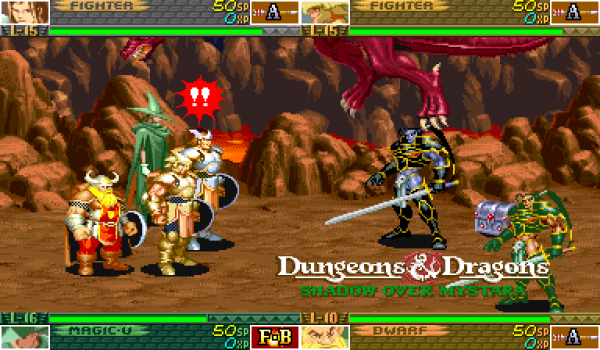
It seems like I say this often in this column, but if there was ever a game that needed to be brought back to modern gamers, it is D&D: Shadow Over Mystara. There have been some great old games that have been given new life on XBLA, PSN, and the Wii's Virtual Console. There have also been some real stinkers; often, classics don't age very well. Hopefully, after reading my thoughts on this game, you can see that the D&D series, especially the second game, were innovative, and extremely deep, and would hold up quite well compared to more modern fare. Capcom, I can guarantee you at least one sale, and perhaps many more. Bring this amazing series of games to the modern consoles!
